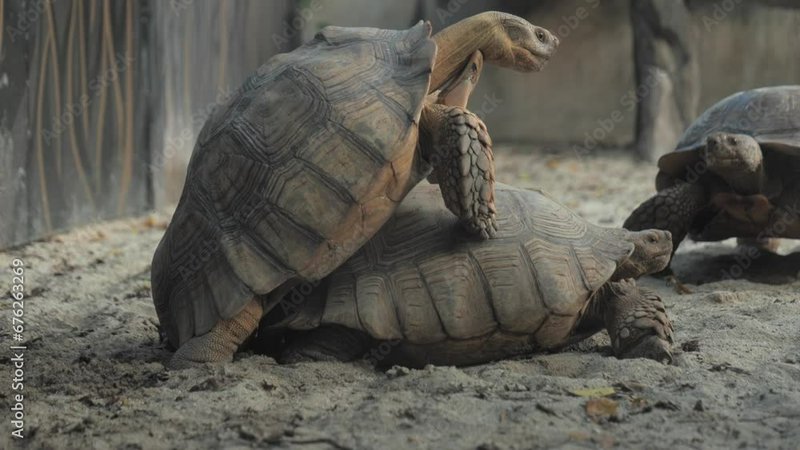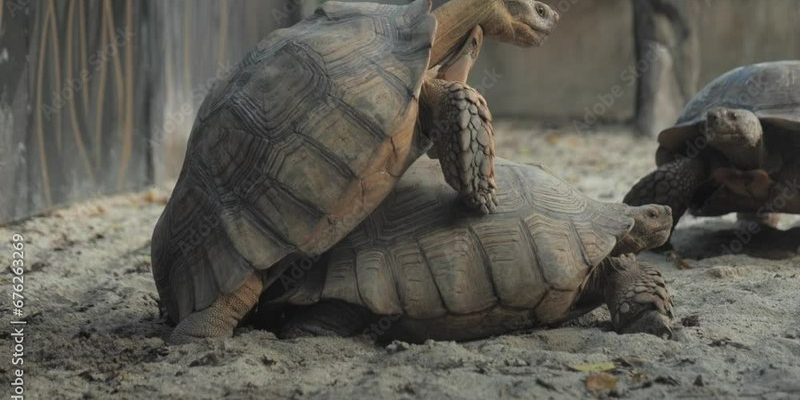
Imagine a world where time moves at a different pace. That’s the life of the Galápagos tortoise. These slow-moving giants inhabit the Galápagos Islands, a remote and precious ecosystem where they have adapted in striking ways. Their reproductive behaviors are essential for the continuation of their species, making it all the more vital to grasp how they mate, nurture their young, and thrive in their natural habitat.
A Brief Overview of Galápagos Tortoises
The Galápagos tortoise, one of the largest tortoise species in the world, is a symbol of evolution and resilience. These reptiles can weigh between 200 to 600 pounds, with lifespans often exceeding 100 years. Imagine sharing the Earth with a creature that could easily outlive you! They come in various subspecies, each adapted to different islands in the archipelago.
Here’s the thing: Galápagos tortoises are not just big; they have complex social structures and behaviors too. They can live in diverse environments ranging from dry scrublands to lush highlands, which influences their diet and lifestyle. Understanding their breeding behavior gives us insights into how they interact with their environment and each other.
Tortoises generally reach sexual maturity around 20 to 25 years of age. That’s a long time to wait for some romance! Let’s dive deeper into how they find mates and what their courtship rituals entail.
Mating Season and Courtship Rituals
Mating season for Galápagos tortoises typically occurs during the warmer months, from January to March. The timing is crucial because it aligns with the rainy season when food is plentiful. This is vital for pregnant females who need adequate nutrition to support their developing eggs.
When it comes to finding a mate, male Galápagos tortoises are quite the performers. They often engage in courtship behaviors, which can be a little dramatic. Males may ram their shells against each other in a show of strength or even make a variety of vocalizations, like grunting, to attract females. This might sound a bit comical, but it’s serious business for these guys!
Once a male catches the attention of a female, they engage in a mating process that lasts several hours. Here’s a fun fact: female tortoises are quite selective! They often choose mates based on their size and vigor, ensuring that they mate with strong individuals who might produce healthier offspring.
Egg-Laying and Nesting Habits
After successful mating, females will find a suitable spot to lay their eggs. This usually happens between May and June. Tortoises can lay anywhere from 2 to 16 eggs in a single clutch, depending on their size and health. They dig a nest in soft soil, creating a cozy environment to protect their eggs.
Once the nest is made, the female deposits the eggs and covers them up, ensuring they’re hidden from predators. You might be wondering why Galápagos tortoises bury their eggs. It’s a simple survival tactic! By hiding their nests, they increase the chances of their young hatching and thriving in the wild.
The incubation period lasts about 120 to 150 days. During this time, the mother tortoise doesn’t stick around; she goes back to her everyday life, leaving her eggs to develop on their own. It’s almost like sending your kids off to camp—exciting but nerve-wracking!
Hatching and Early Life Stages
When the eggs finally hatch, tiny tortoise hatchlings emerge, each no bigger than a ping pong ball! This moment is crucial for the species’ survival. Hatchlings are instinctively driven to make their way to the ocean or nearby vegetation, depending on where they were born.
At this stage, they face numerous challenges. From predators like rats and birds to the elements, survival is tough. Here’s an interesting twist: only about 1 in 100 hatchlings will make it to adulthood! To help them survive, they rely on their natural instincts and the cover of vegetation.
As they grow, young tortoises will remain with their peers but typically face little parental care. It’s a harsh reality, but it prepares them for a life of independence, much like how we all must grow up and learn our survival skills.
Threats to Reproductive Success
Despite their impressive adaptability, Galápagos tortoises face several threats that impact their breeding success. Human activity, habitat destruction, and the introduction of non-native species have significantly affected their populations.
Invasive species, such as goats and rats, compete for resources and, in some cases, prey on tortoise eggs. Conservation efforts are underway to combat these challenges, but it’s a long and ongoing battle. Protecting these ancient giants is not just about preserving a species; it’s about maintaining the ecological balance of their unique habitat.
Here’s the thing: when we think about conservation, it’s not just about saving the tortoises themselves. It’s about protecting an entire ecosystem that supports countless other species, both on land and in the ocean.
The Importance of Conservation Efforts
With all the challenges faced by the Galápagos tortoise, conservation efforts have become increasingly critical. Organizations work tirelessly to protect these tortoises and their habitats through breeding programs, protection of nesting sites, and education initiatives.
One successful effort has been the captive breeding programs that help increase the tortoise population. By raising young tortoises in controlled environments and eventually reintroducing them into the wild, conservationists aim to boost their numbers and ensure genetic diversity.
Moreover, protecting the Galápagos Islands’ ecosystems is vital for the tortoise’s future. It involves efforts to control invasive species, preserve natural habitats, and engage local communities in sustainable practices.
In summary, the breeding and reproductive behavior of the Galápagos tortoise is a captivating journey of resilience and survival. From their courtship rituals to the challenges they face, these tortoises remind us of the delicate balance of nature.
Understanding their reproductive habits helps us appreciate the complexity of their lives and the importance of conserving these magnificent creatures. By protecting the Galápagos tortoise, we’re also safeguarding an invaluable part of our world’s natural heritage.
So the next time you think about these ancient reptiles, remember that there’s so much more going on beneath their hard shells. It’s a story of life, survival, and the ongoing struggle to thrive in a changing world.

